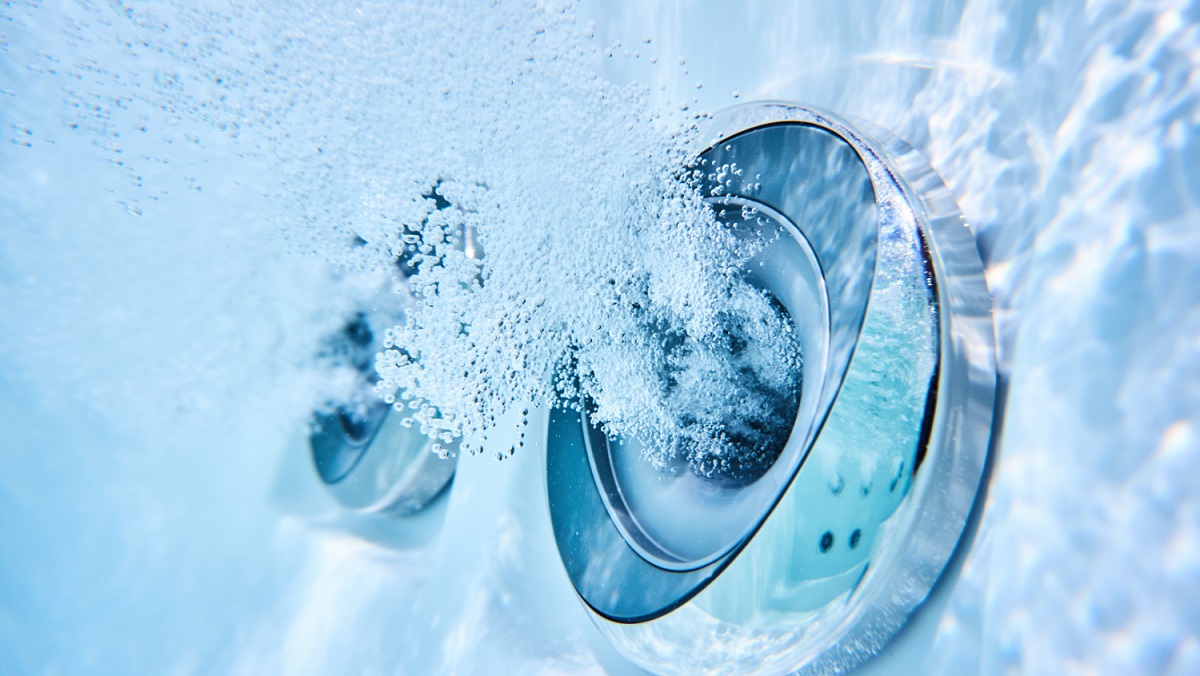Home>Gardening & Outdoor>Pool & Spa Care>Why Does My Hot Tub Make My Skin Itch


Pool & Spa Care
Why Does My Hot Tub Make My Skin Itch
Published: December 29, 2023
Discover the reasons behind itchy skin after using your hot tub. Learn how proper pool and spa care can alleviate this discomfort. Find solutions now.
(Many of the links in this article redirect to a specific reviewed product. Your purchase of these products through affiliate links helps to generate commission for Storables.com, at no extra cost. Learn more)
**
Introduction
**
So, you've been enjoying a relaxing soak in your hot tub, but lately, you've noticed an annoying itch that just won't go away. What could be causing this discomfort? It's a common issue known as "hot tub itch," and it can put a damper on your spa experience. In this article, we'll delve into the reasons behind this pesky problem and explore effective strategies for preventing and treating hot tub itch.
Hot tub itch, also referred to as "hot tub rash," is a condition characterized by itching, redness, and irritation of the skin that occurs after soaking in a hot tub or pool. Understanding the root causes of this discomfort is crucial for finding relief and ensuring that your spa sessions remain enjoyable and rejuvenating. Let's dive into the details and uncover the mysteries of hot tub itch.
**
Key Takeaways:
- Hot tub itch, caused by bacteria and poor maintenance, can be prevented by maintaining proper sanitation, pH levels, and routine maintenance. Swift treatment with gentle cleansing and topical remedies can alleviate discomfort.
- Understanding the causes of hot tub itch empowers hot tub owners to take proactive measures to prevent skin irritation. By prioritizing cleanliness and hygiene, hot tub enthusiasts can enjoy a blissful and itch-free spa experience.
Read more: Why Does My Hot Tub Keep Running
Understanding Hot Tub Itch
**
Before delving into the causes and remedies for hot tub itch, it’s essential to grasp the nature of this discomfort. Hot tub itch typically manifests as an itchy rash or irritation on the skin, often appearing within hours of soaking in a hot tub. This condition can affect various parts of the body that come into contact with the water, such as the legs, torso, arms, and neck.
One of the primary culprits behind hot tub itch is the presence of certain microorganisms in the water. Pseudomonas aeruginosa, a bacterium commonly found in warm water environments, is a leading instigator of this skin irritation. When the bacterium comes into contact with the skin, it can cause an inflammatory response, leading to the characteristic itching and redness associated with hot tub itch.
Furthermore, the warm and moist environment of hot tubs provides an ideal breeding ground for bacteria and other microbes. Inadequate maintenance, improper water chemistry, and insufficient sanitation can exacerbate this issue, increasing the likelihood of skin irritation and discomfort for hot tub users.
Understanding the mechanisms at play in hot tub itch empowers hot tub owners and users to take proactive measures to mitigate the risk of this bothersome condition. By gaining insight into the factors that contribute to hot tub itch, individuals can make informed decisions to maintain a clean, hygienic, and skin-friendly hot tub environment.
**
Causes of Hot Tub Itch
**
Hot tub itch can stem from various factors, with microbial contamination being a key contributor to this skin irritation. The following are common causes of hot tub itch:
- Pseudomonas Aeruginosa: This bacterium thrives in warm water and is a prevalent cause of hot tub itch. When individuals come into contact with water containing Pseudomonas aeruginosa, particularly in inadequately sanitized hot tubs, it can lead to skin irritation and discomfort.
- Inadequate Sanitation: Insufficient levels of sanitizers, such as chlorine or bromine, in the hot tub water can foster the growth of bacteria and other microorganisms, heightening the risk of hot tub itch. Proper maintenance and regular water testing are essential for upholding optimal sanitation levels.
- pH Imbalance: Fluctuations in the pH levels of hot tub water can impact its overall quality and the effectiveness of sanitizers. When the pH strays from the recommended range, it can compromise the water’s ability to combat microbial contaminants, potentially contributing to skin irritation in hot tub users.
- Biofilm Formation: Biofilms, which are slimy layers containing bacteria and other microorganisms, can develop within hot tub plumbing and surfaces. These biofilms serve as reservoirs for harmful microbes, posing a risk of skin irritation when they are dislodged and come into contact with bathers.
- Poor Water Quality: Factors such as inadequate filtration, debris accumulation, and organic contaminants can compromise the quality of hot tub water, creating an environment conducive to microbial proliferation and skin irritation.
It’s important to recognize that these causes are interrelated, and addressing them collectively is crucial for preventing hot tub itch and maintaining a hygienic and skin-friendly hot tub environment.
**
Prevention and Treatment of Hot Tub Itch
**
Preventing hot tub itch entails a proactive approach to maintaining clean and hygienic hot tub water. By implementing effective preventive measures, individuals can minimize the risk of skin irritation and enjoy their hot tub experience to the fullest. Here are key strategies for preventing and treating hot tub itch:
Prevention:
- Proper Sanitation: Maintaining adequate levels of sanitizers, such as chlorine or bromine, is essential for controlling microbial contaminants in hot tub water. Regularly testing and adjusting sanitizer levels can help uphold a hygienic environment and reduce the likelihood of hot tub itch.
- pH Management: Monitoring and adjusting the pH levels of hot tub water within the recommended range is crucial for optimizing sanitizer effectiveness and preventing skin irritation. A balanced pH promotes water clarity and inhibits microbial growth.
- Routine Maintenance: Adhering to a comprehensive maintenance routine, including regular water testing, filter cleaning, and water replacement, is instrumental in preserving water quality and minimizing the risk of hot tub itch.
- Biofilm Control: Implementing biofilm-reducing products and cleaning regimens can help mitigate the formation of microbial biofilms within hot tub plumbing and surfaces, reducing the potential for skin irritation in hot tub users.
- Filtration and Circulation: Ensuring effective filtration and water circulation in the hot tub aids in removing impurities and maintaining water clarity, contributing to a cleaner and safer bathing environment.
Read more: Why Does My Hot Tub Lose Water
Treatment:
If hot tub itch has already manifested, prompt treatment is essential to alleviate discomfort and restore skin health. The following measures can aid in addressing hot tub itch:
- Gentle Cleansing: Thoroughly washing the affected areas with mild soap and water can help remove any residual contaminants and soothe irritated skin. Avoiding harsh or abrasive cleansers is advisable to prevent further irritation.
- Topical Remedies: Applying soothing lotions or anti-itch creams can provide relief from itching and reduce redness. Look for products containing ingredients like aloe vera or hydrocortisone for their calming and anti-inflammatory properties.
- Consultation with a Physician: In cases of persistent or severe hot tub itch, seeking medical advice is prudent. A healthcare professional can provide tailored recommendations and, if necessary, prescribe medications to address the condition effectively.
By integrating these preventive and treatment measures, hot tub enthusiasts can safeguard their skin against itchiness and maintain a hygienic hot tub environment conducive to relaxation and rejuvenation.
**
To prevent itching from your hot tub, make sure to maintain proper water chemistry and cleanliness. Regularly clean the filters and shock the water to kill bacteria and algae. Also, shower before and after using the hot tub to remove any potential irritants from your skin.
Conclusion
**
Hot tub itch can undoubtedly detract from the blissful experience of unwinding in a soothing hot tub, but armed with knowledge about its causes and prevention, you can take proactive steps to keep your skin happy and itch-free. By understanding the role of microbial contaminants, inadequate sanitation, and other contributing factors, you can implement effective strategies to prevent hot tub itch and maintain a pristine hot tub environment.
Regular maintenance, proper water chemistry management, and biofilm control are pivotal in mitigating the risk of hot tub itch, ensuring that your hot tub remains a sanctuary of relaxation and well-being. Moreover, swift and appropriate treatment measures can alleviate discomfort if hot tub itch arises, allowing you to swiftly return to enjoying the rejuvenating benefits of your spa.
Remember, the joy of soaking in a hot tub should never be overshadowed by the nuisance of hot tub itch. By prioritizing cleanliness, hygiene, and skin-friendly practices, you can revel in the therapeutic warmth of your hot tub without the unwelcome itchiness. With these insights and proactive measures, you can bid farewell to hot tub itch and embrace a revitalizing hot tub experience with peace of mind.
Frequently Asked Questions about Why Does My Hot Tub Make My Skin Itch
Was this page helpful?
At Storables.com, we guarantee accurate and reliable information. Our content, validated by Expert Board Contributors, is crafted following stringent Editorial Policies. We're committed to providing you with well-researched, expert-backed insights for all your informational needs.















0 thoughts on “Why Does My Hot Tub Make My Skin Itch”